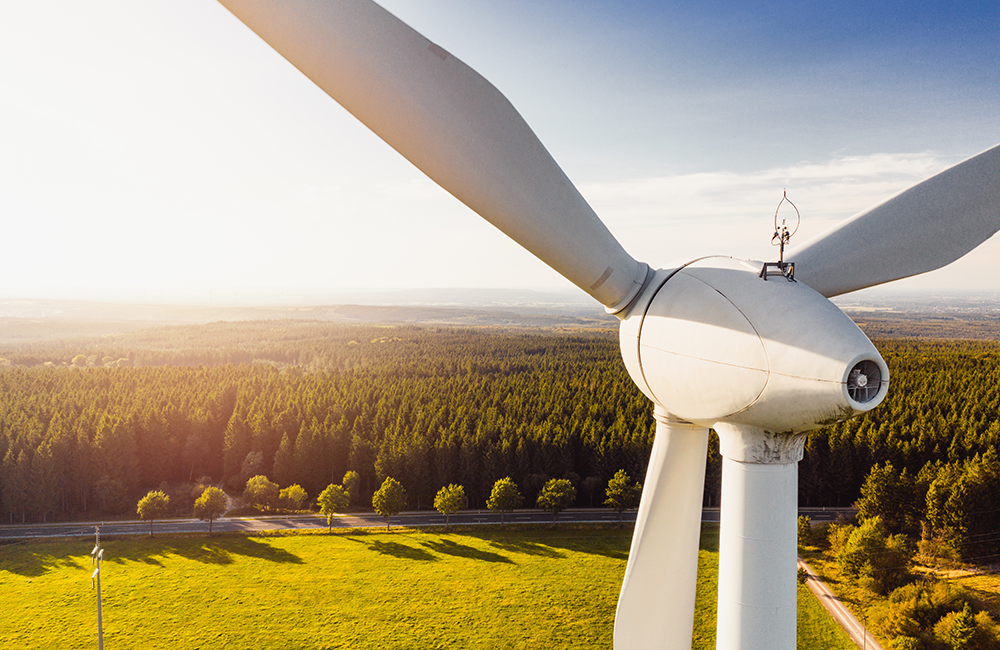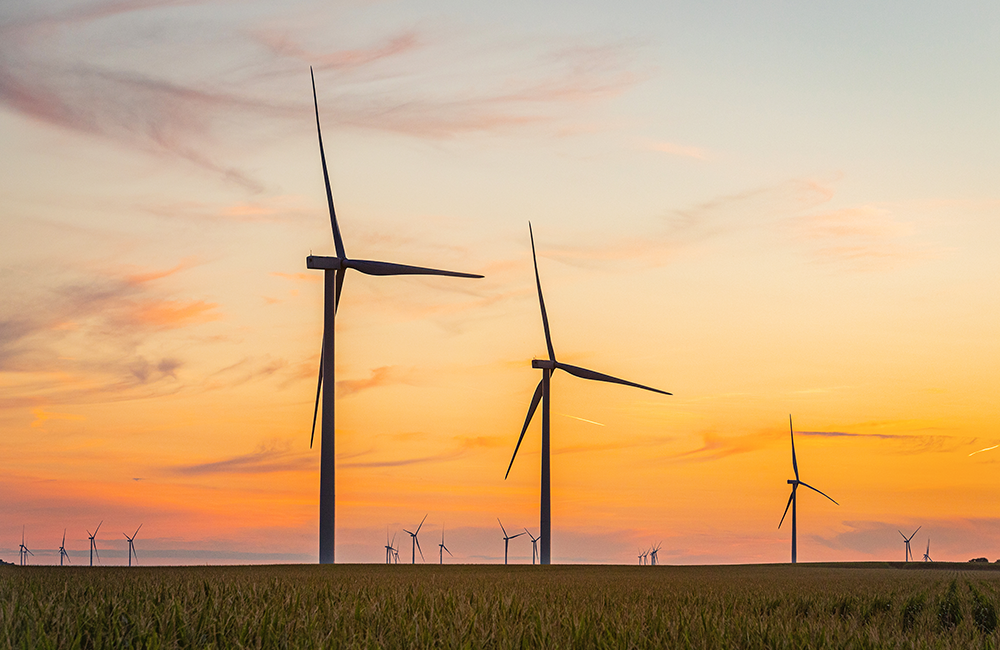
Home to a third of the world’s offshore wind farm installations and more installed capacity than any other country, the U.K. has clearly staked a claim as an offshore wind powerhouse. The U.K. government’s plan to increase offshore energy to one-third of the total energy mix by 2030 puts the country well along the path to achieving its goal of net zero greenhouse gas emissions by 2050.
Despite the many offshore energy innovations that have brought to the global table, the U.K.’s efforts are still often overshadowed by the European offshore energy giants. Being bigger, it seems, sometimes garners more attention than being better. The result: disproportionate reliance on European developers and technology.
To attain market share that is commensurate with its contributions, the U.K. offshore energy industry must differentiate itself from its competitors. That means encouraging even more innovation and then helping innovators develop and deploy those advances. While European partners may be needed for steel fabrication and other facets of offshore installation, these collaborations should steer clear of areas of U.K. strength.
Read The White Paper

Home to a third of the world’s offshore wind farm installations and more installed capacity than any other country, the U.K. has clearly staked a claim as an offshore wind powerhouse. The U.K. government’s plan to increase offshore energy to one-third of the total energy mix by 2030 puts the country well along the path to achieving its goal of net zero greenhouse gas emissions by 2050.
Despite the many offshore energy innovations that have brought to the global table, the U.K.’s efforts are still often overshadowed by the European offshore energy giants. Being bigger, it seems, sometimes garners more attention than being better. The result: disproportionate reliance on European developers and technology.
To attain market share that is commensurate with its contributions, the U.K. offshore energy industry must differentiate itself from its competitors. That means encouraging even more innovation and then helping innovators develop and deploy those advances. While European partners may be needed for steel fabrication and other facets of offshore installation, these collaborations should steer clear of areas of U.K. strength.
To amplify the benefits of the U.K.’s innovation culture and research infrastructure, there are three areas where the academic community, industry and public sector might focus:
INNOVATION IN PROJECT DELIVERY
The U.K.’s reputation is built on innovations that reduce life cycle costs as well as electricity prices, supporting everything from power grid transformation to the addition of green hydrogen energy to the offshore energy portfolio.
There are additional areas where the U.K. could have equal or greater impact. Consider that installation, operation and maintenance (IO&M) can account for as much as one-third of an offshore wind farm’s levelized energy cost, that is, the average energy price it must receive over its lifetime to break even. The right IO&M innovations could reduce levelized energy costs, making a wind farm more cost-competitive.
One way the U.K. might capitalize on this opportunity would be by prioritising innovations in project delivery. Significant cost and schedule savings are possible, for example, by shifting from the traditional design and construction approach to an engineer-procure-construct (EPC) project delivery model.
Under the EPC framework, a single contractor oversees all engineering, procurement and construction and is responsible for delivering the completed project to the owner on a defined schedule and budget. Commonly used on other types of major infrastructure projects, the EPC model offers wide-ranging benefits to offshore wind projects. By integrating construction planning and long-lead equipment procurement with design, schedules can often be accelerated. Owners also benefit from working with a single responsible party that accepts at least part of the project delivery risk.
Coupled with lean techniques, pull planning and other collaborative best practices, EPC typically results in optimised designs and a more efficient construction process. In practical terms, that can mean anything from cost-saving construction alternatives or on-barge fabrication of key components to logistics efficiencies when transporting materials to the project site.
INNOVATION IN OPERATIONS AND MAINTENANCE (O&M)
It can take up to four years to construct an offshore wind farm, compared to the 20-25 years it will be operated and maintained. Innovations that reduce O&M costs can result in cost savings that keep accumulating over the design life cycle.
The U.K. already has a strong foundation in this area, given the smart technologies and other O&M advances British companies have already introduced in the aerospace industry and other manufacturing sectors.
For proof, look no further than Rolls-Royce, the aerospace and defense company that optimises its planes’ maintenance schedules using predictive analytics and employs digital twin technology, analytics and machine learning to reduce the amount of carbon its aircraft engines produce. Digital twins — virtual product models that can be updated alongside real-life counterparts — are also being used to support jet engine maintenance and efficiency improvements.
Jet engine manufacturers use sensors and smart technologies to monitor and track flight conditions, pilot responses and jet engine performance in real time. All are part of the company’s plan to tailor maintenance regimens to each engine’s needs. Its goal is to optimise engine life based on real-world conditions, rather than the dictates of a maintenance manual.
Change the words jet engine to wind turbine, and you begin to see the potential these and other digital technologies offer offshore wind farm O&M. By harnessing data to optimise the performance and life cycle costs of critical infrastructure, owners can reap significant cost savings over an installation’s life.
Digital twins, analytics and machine learning also have the potential to improve efficiency and reduce costs associated with site development, installation, condition monitoring, decommissioning and more. For example, solutions that factor in the current price of electricity could aid day-to-day operational decisions on energy production.
Because weather can be a key driver in power production and maintenance activities, a new generation of tools might include advanced ocean weather forecasting capabilities that maintenance crews can use when planning site visits for service and maintenance activities. Robotic solutions could be developed to perform repetitive tasks and complete work in high-risk, complex or tight-fitting conditions.
These examples are just the tip of the digital iceberg. The U.K. should explore smart solutions that benefit offshore energy O&M. Remote monitoring activities could be based in U.K. facilities, further establishing the country’s dominance on the European playing field.
INNOVATION IN GRID INFRASTRUCTURE
As offshore wind generation capacity grows, so does the need for an efficient transmission grid linking offshore sites to onshore power infrastructure.
The current point-to-point connections were appropriate when expectations for offshore wind capacity were low. But given the U.K.’s commitment to quadruple its offshore capacity by 2030, that structure is not sustainable.
Now is the time for the U.K. to embrace the next generation of innovative transmission infrastructure technologies, policies and methods. That could include a meshed offshore grid structure that connects wind farm clusters, offshore hubs and onshore infrastructure. This approach could produce significant financial, technical and environmental benefits, though extensive industry collaboration would be required.
In fact, lengthy discussions of a cross-Europe mesh grid system have largely ended with disagreements on funding and technology. This creates an opportunity for the U.K. to demonstrate industry leadership while differentiating itself in the market. A U.K.-only mesh grid — designed with U.K.-inspired innovations — could provide a prototype the world can follow as the offshore wind market expands.
CONCLUSION
Embracing a mesh grid system — like pursuing innovations in project delivery and O&M — can help the U.K. to both decrease its reliance on its European offshore wind counterparts while positioning itself as a global market leader. That these efforts would also help the U.K. achieve its net zero greenhouse gas emissions goals is just the icing on the cake.



